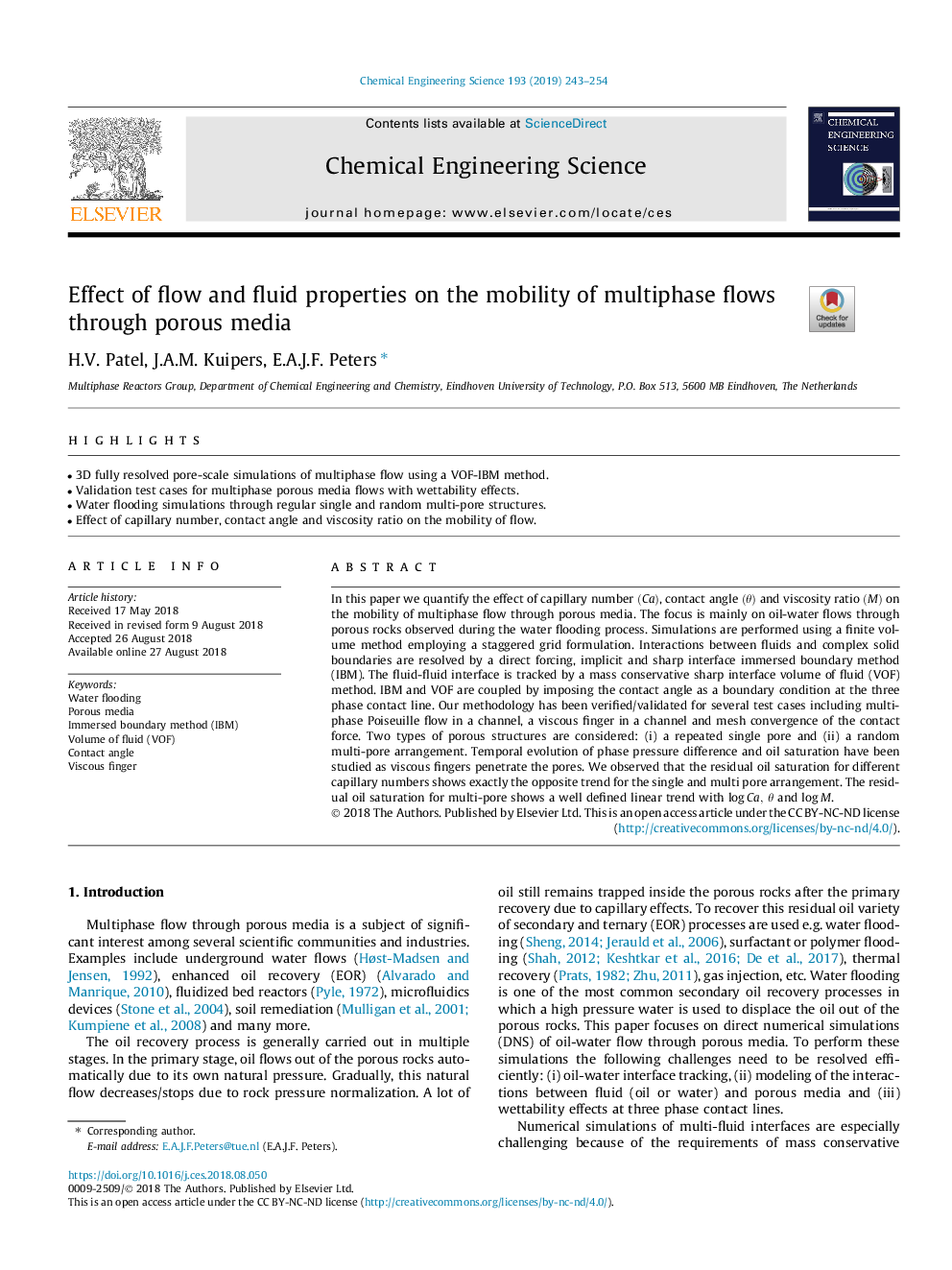| Article ID | Journal | Published Year | Pages | File Type |
|---|---|---|---|---|
| 10139052 | Chemical Engineering Science | 2019 | 12 Pages |
Abstract
In this paper we quantify the effect of capillary number (Ca), contact angle (θ) and viscosity ratio (M) on the mobility of multiphase flow through porous media. The focus is mainly on oil-water flows through porous rocks observed during the water flooding process. Simulations are performed using a finite volume method employing a staggered grid formulation. Interactions between fluids and complex solid boundaries are resolved by a direct forcing, implicit and sharp interface immersed boundary method (IBM). The fluid-fluid interface is tracked by a mass conservative sharp interface volume of fluid (VOF) method. IBM and VOF are coupled by imposing the contact angle as a boundary condition at the three phase contact line. Our methodology has been verified/validated for several test cases including multiphase Poiseuille flow in a channel, a viscous finger in a channel and mesh convergence of the contact force. Two types of porous structures are considered: (i) a repeated single pore and (ii) a random multi-pore arrangement. Temporal evolution of phase pressure difference and oil saturation have been studied as viscous fingers penetrate the pores. We observed that the residual oil saturation for different capillary numbers shows exactly the opposite trend for the single and multi pore arrangement. The residual oil saturation for multi-pore shows a well defined linear trend with logCa,θ and logM.
Related Topics
Physical Sciences and Engineering
Chemical Engineering
Chemical Engineering (General)
Authors
H.V. Patel, J.A.M. Kuipers, E.A.J.F. Peters,
